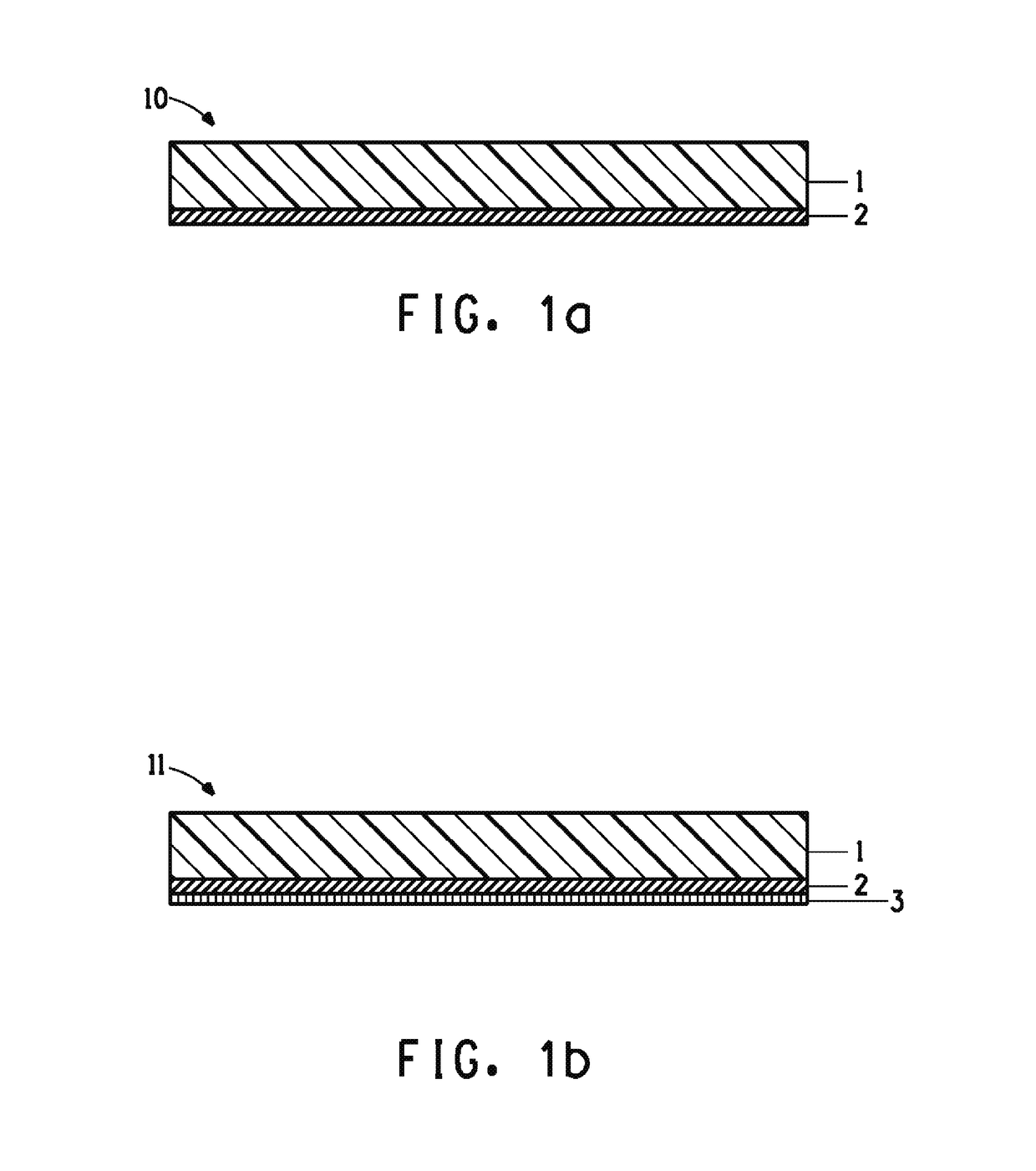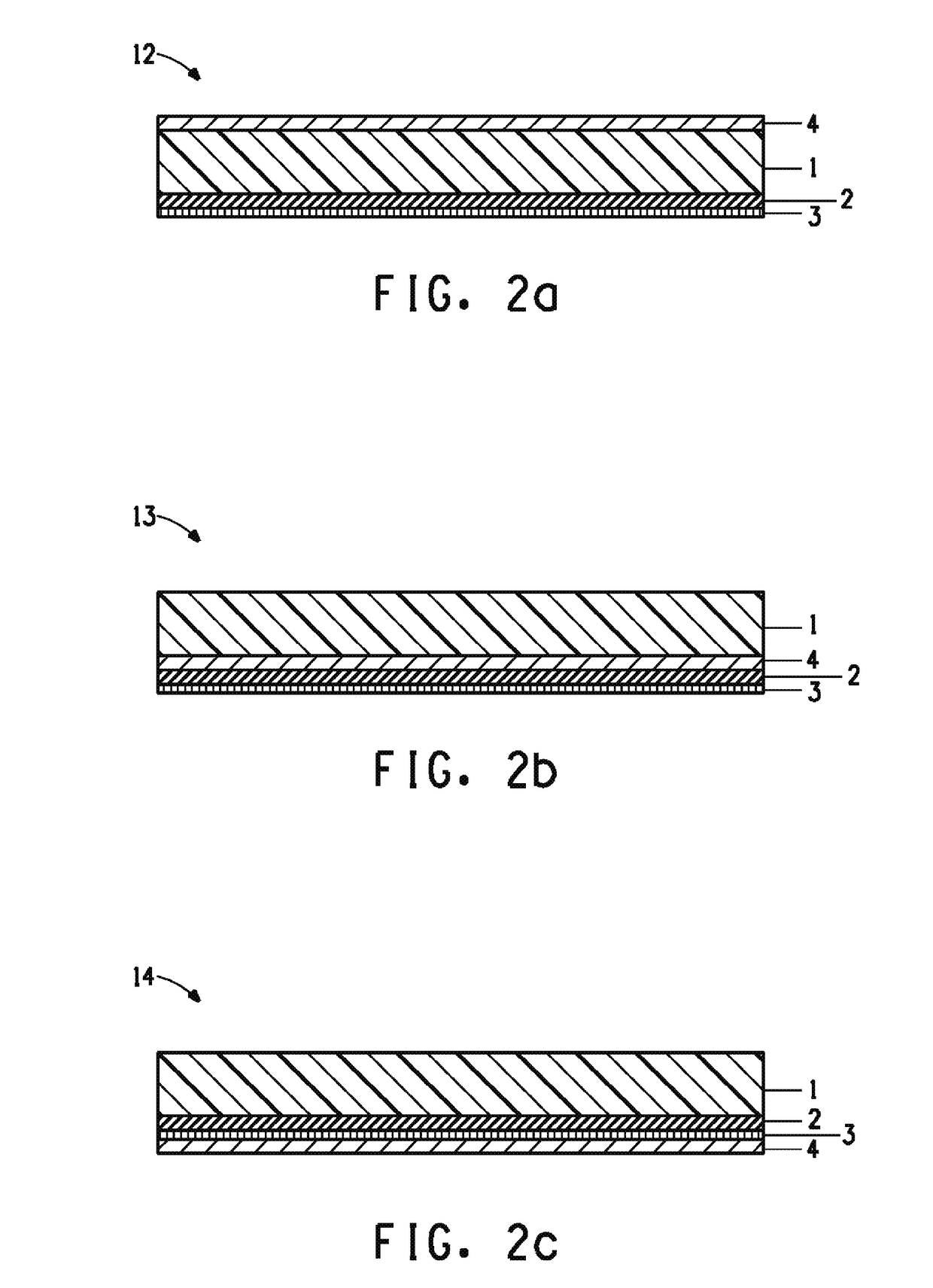Breathable product for protective mass transportation and cold chain applications
a technology of mass transportation and cold chain, applied in the field of breathable products, can solve the problems of poor temperature management experience, unsuitable packaging materials for humidity or temperature-sensitive goods, adding further to transportation costs and supply chain complexity, and achieves the effect of low emissivity and high reflection
- Summary
- Abstract
- Description
- Claims
- Application Information
AI Technical Summary
Benefits of technology
Problems solved by technology
Method used
Image
Examples
example 7
[0079]The sheet samples of Comparative Example 6 were tested by the method described above with the metalized surface facing down towards the temperature sensor.
[0080]
TABLE 1Moisture vaporTemperatureMetal layertransmission raterise ° C.orientationg / m2 / 24 hrsΔT5ΔT15ComparativeN.A.N.A.24.5N.D.**Example 1ComparativeN.A. 2a32.6N.D. Example 2ComparativeUP 4.09.0Example 3ComparativeDOWN 7.115.8Example 4ComparativeN.A.160012.4123.01Example 5ComparativeUP13147.1214.92Example 6Example 7DOWN13145.6312.53*N.A. not applicable.**N.D. not determined because the test was stopped when the temperature reading exceeded 60° C.aMeasured on one layer1Average of four pairs of measurements: 5 min values range from 12.2° C. to 12.5° C., 15 minute values range from 22.7° C. to 23.4° C.2Average of six pairs of measurements: 5 min values range from 6.6° C. to 7.5° C., 15 minute values range from 14.0° C. to 15.5° C.3Average of six pairs of measurements: 5 min values range from 5.3° C. to 6.2° C., 15 minute ...
example 8
[0082]Tyvek® 1560M, a polyethylene non-woven reflective sheet bearing deposited on one side a thin layer of metallic aluminium, such that the sheet has an areal density of 58 g / m2, a total light reflectivity on the white side of 92.2% and an emissivity on the metalized side of 0.15, available from E.I. DuPont de Nemours and Company. This material was tested by the method described above with the metalized surface facing downward towards the temperature sensor.
example 9
[0083]Tyvek® 3566M, a polyethylene non-woven reflective sheet having deposited on one side successively a patterned, flame retardant coating, a thin layer of metallic aluminium and a thin corrosion resistant lacquer such that the sheet has an areal density of 64 g / m2, a total light reflectivity on the white side of 92.6% and an emissivity on the metalized side of 0.11, commercially available from E.I. DuPont de Nemours and Company. This material was tested by the method described above with the metalized surface facing downwards towards the temperature sensor.
PUM
| Property | Measurement | Unit |
|---|---|---|
| areal density | aaaaa | aaaaa |
| emissivity | aaaaa | aaaaa |
| emissivity | aaaaa | aaaaa |
Abstract
Description
Claims
Application Information
 Login to View More
Login to View More - R&D
- Intellectual Property
- Life Sciences
- Materials
- Tech Scout
- Unparalleled Data Quality
- Higher Quality Content
- 60% Fewer Hallucinations
Browse by: Latest US Patents, China's latest patents, Technical Efficacy Thesaurus, Application Domain, Technology Topic, Popular Technical Reports.
© 2025 PatSnap. All rights reserved.Legal|Privacy policy|Modern Slavery Act Transparency Statement|Sitemap|About US| Contact US: help@patsnap.com



